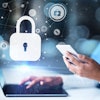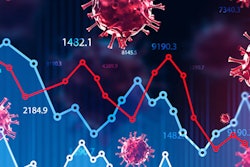
The risk of COVID-19 among those seeking dental care mirrors local positivity rates, according to a study published on March 2 in the Journal of the American Dental Association. The researchers also highlighted the risk of asymptomatic patient consults.
The group looked at data from June to December 2020 at a hospital in Chicago to compare citywide positivity rates with rates among those seeking dental care. They found a COVID-19 positivity rate of 6.7% -- and all cases were asymptomatic at the time of care.
"The rate of COVID-19 in a population seeking oral health care reflects the community positivity-rate," wrote the authors, led by Dr. Benjamin Palla from the University of Illinois (UIC) at Chicago College of Dentistry. "Asymptomatic or presymptomatic patients present risks to providers, staff, and other patients."
It's important for oral health providers to understand the risk of COVID-19 to dental health providers and how to decrease that risk, the authors noted. They conducted their study to better understand the risk of exposure.
For their review, Palla and colleagues identified patients seeking dental care at the UIC Emergency Department between June 1 and December 31, 2020. The patients were identified through electronic medical record searches for ordered and completed oral and maxillofacial surgery consults.
The patients' COVID-19 positivity rates strongly correlated with citywide positivity rates. Of the 203 encounters, 149 patients were tested for COVID-19 and 10 ultimately tested positive for the disease.
The 6.7% positive test rate aligned with city averages in Chicago at the time. The authors also found that half of those who tested positive reported visiting a dental office within seven days of coming to the emergency department.
Furthermore, all 10 people who tested positive were asymptomatic for COVID-19 and did not present with a fever. None of the subjects reported positive symptoms for COVID-19 during their initial screening exam or recent contact with people who had COVID-19.
"This study provides an initial assessment of the risk of COVID-19 infection among a population seeking oral health care," the authors wrote. "Our results show the risk of COVID-19 infection in a population seeking oral health care reflects that current positivity rate in the geographic area of the practice."
They cautioned that the biggest potential shortcoming of the report was bias from the study population. In addition, the demographics and socioeconomic status at the hospital do not necessarily represent what would be seen at a private dental practice, and the study was limited to emergency department visits.
The authors suggested that dentists continue to monitor and understand COVID-19 infection rates in their area.
"Understanding the risk of infection and the mitigation of that risk is critical to the delivery of oral health care," they wrote.



















